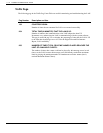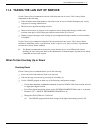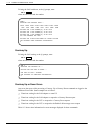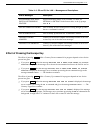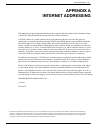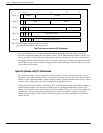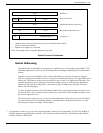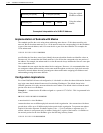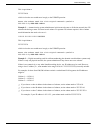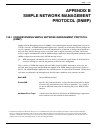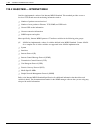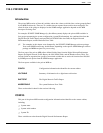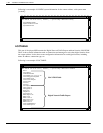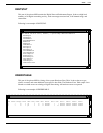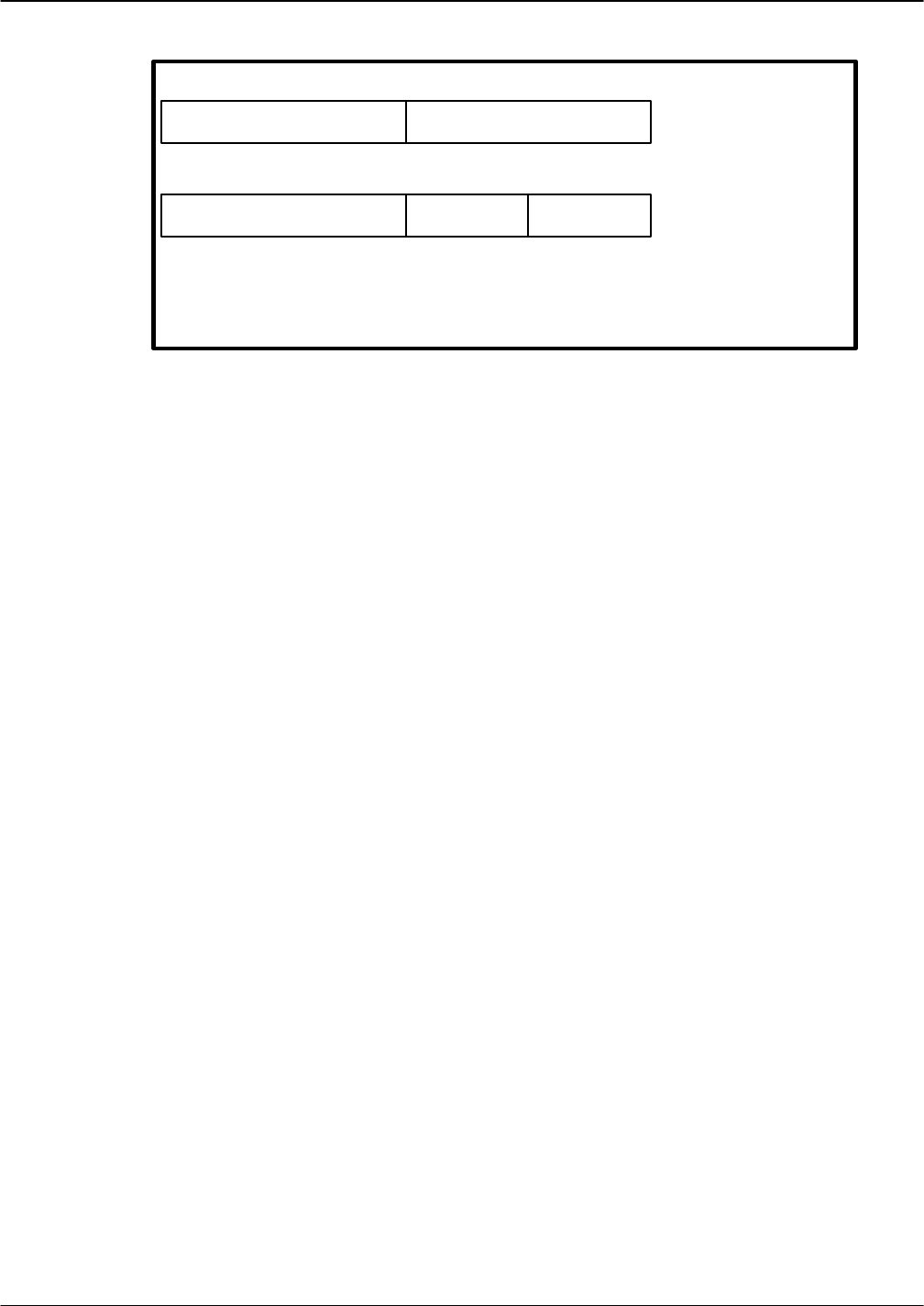
11A-4 Installation and MaintenanceVolume
Octel 200/300 S.4.1 PB60019−01
Internet part (netid) Local part (hostid)
Internet part Subnet Hostid
Using the original
IP address scheme.
Using the subnet
scheme.
Conceptual Interpretation of a 32-Bit IP Address
Implementation of Subnets with Masks
The standard specifies that a site using subnet addressing must choose a 32-bit subnet mask for each
network. Bits in the subnet mask are set to 1 if the network treats the corresponding bit in the IP address
as part of the network address, and 0 if it treats the bit as part of the host identifier. For example, the
32-bit subnet mask
11111111 11111111 11111111 00000000
specified that the first three octets (bytes) identify the network and the fourth octet identifies a host on
that network. It is assumed that the subnet mask has 1s for all bits that correspond to the net portion of
the address. For example, the subnet mask for a class B network always includes the first two octets plus
zero or more subnet bits.
The standard does not require that the subnet bits be contiguous. However, it is recommended that sites
use contiguous subnet masks and they use the same mask throughout an entire set of physical networks
that share a network address because noncontiguous subnet masks make assigning host addresses and
understanding routing tables more difficult.
Configuration Implications
For a Octel 200/300 LAN network configuration, it is desirable to collect the subnet information from the
user in the same dotted decimal format used for obtaining IP addresses. The default shown in the
UPDATE questions is for only one network that has zero subnets. The default is derived from the netid
portion of the host’s own IP address.
Example 1 — Assume that the IP address assigned to a system is 157.156.26.1. This is represented in its
binary format
100111101 10011100 00011010 00000001
to note that this is a class B address.
Assume that there are ten different physical networks in this organization. Also assume that with future
growth, there will be up to 20 different physical networks in this organization. To represent ten subnets
requires 4 bits and to represent 20 subnets requires 5 bits — 5 bits is sufficient to represent up to 32
subnets, whereas 4 can represent only 16 subnets. Setting the 5 top bits of the hostid to 1 in addition to
the network portion for the class B address gives the following in binary format:
11111111 11111111 11111000 00000000



